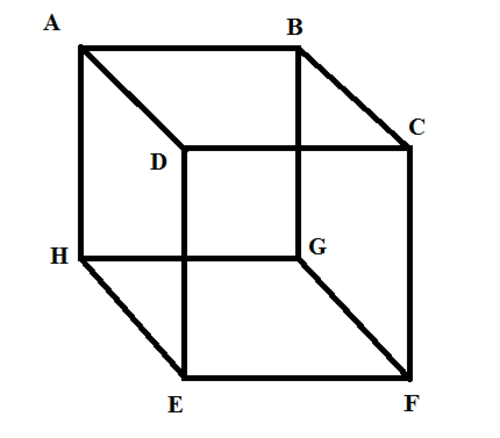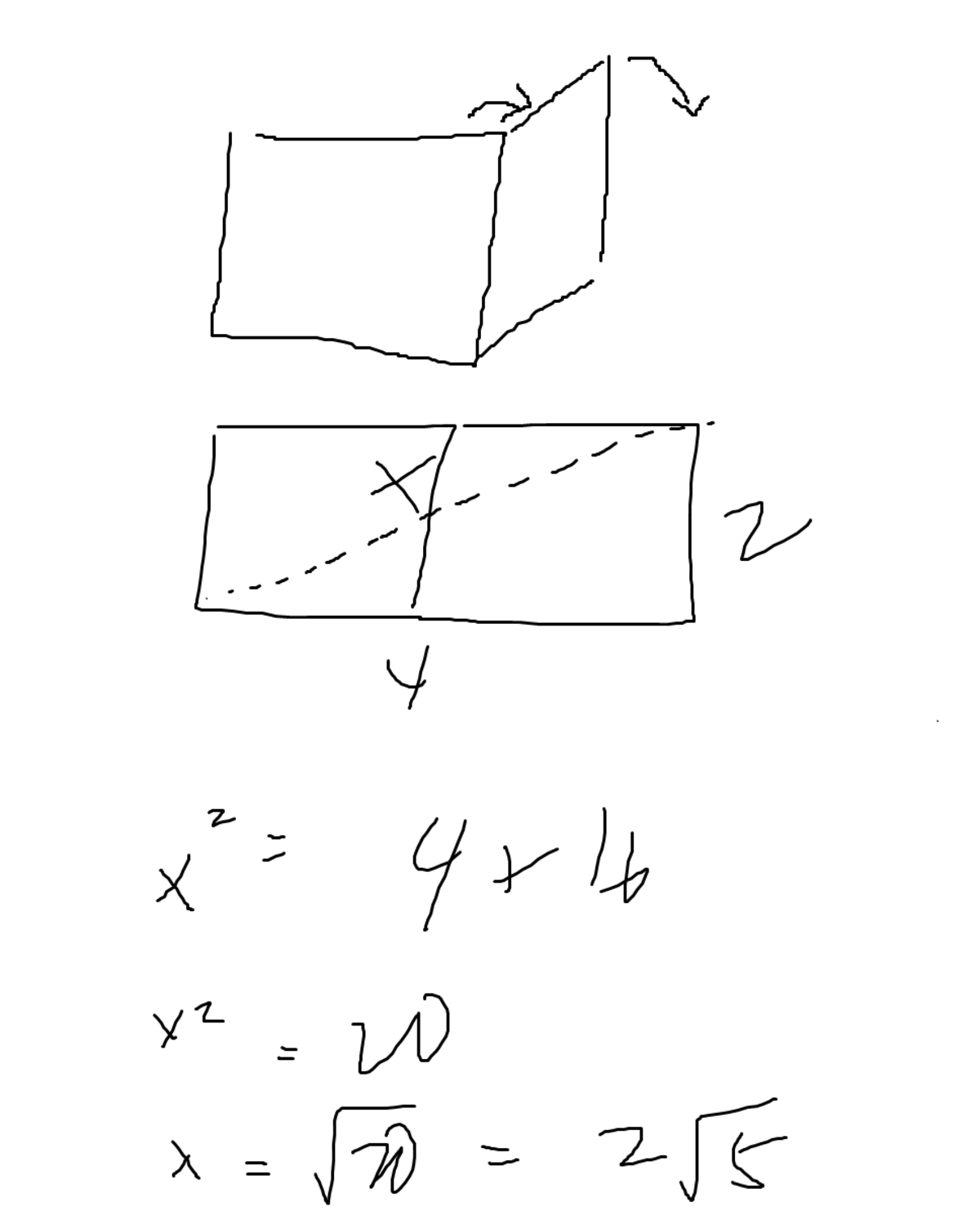Shortest way out
 Above is a cube
A
B
C
D
E
F
G
H
.
A
B
C
D
is the ceiling,
E
F
G
H
is the floor, and the rest are the walls. Additionally,
A
B
=
2
. A lizard is on point
F
and is wanting to go to point
A
. If the lizard can only travel via walls, what is the measure of the shortest distance the lizard can take in order to reach its destination?
Above is a cube
A
B
C
D
E
F
G
H
.
A
B
C
D
is the ceiling,
E
F
G
H
is the floor, and the rest are the walls. Additionally,
A
B
=
2
. A lizard is on point
F
and is wanting to go to point
A
. If the lizard can only travel via walls, what is the measure of the shortest distance the lizard can take in order to reach its destination?
The answer can be expressed in the form of A + B C such that A , B and C are prime numbers or 0 . Find A + B C .
The answer is 2.5.
This section requires Javascript.
You are seeing this because something didn't load right. We suggest you, (a) try
refreshing the page, (b) enabling javascript if it is disabled on your browser and,
finally, (c)
loading the
non-javascript version of this page
. We're sorry about the hassle.
2 solutions
For a cube, to access the opposite non-coplanar corners, the shortest distance is the diagonal. Since the lizard is restricted to only the walls, it can't use it. Let M be the midpoint of D and E . Since D E = 2 , D M = M E = 1 . Connecting F , M , and A we can get the possible shortest distance. F M = M A = 1 2 + 2 2 = 5 The shortest distance is F M + M A which is equal to 2 5 . The answer should be A + B C . We have A = 0 , B = 2 , C = 5 . And B C = 2 5 = 2 . 5
Shortest path is through two walls. You can see it as u n f o l d i n g the walls into a two-dimensional figure (as seen below). Then do the rest. (Please be considerate of my MSPaint solution. hehe)